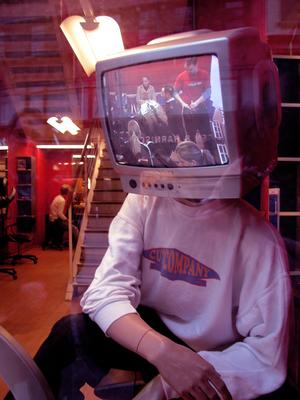The difference in 1080P and 1080i is like night and day to some, and yet to others it poses both a question and a problem. What is the difference? Televisions have come a long way since the CRT days of the SNES. It can be difficult to compare features now that there are so many to compare.
To fully answer this question I need to give you a brief over view of what these numbers really mean. Each resolution of video is actually directly correlated to a PC video resolution or rather a maximum capable resolution. Most Televisions are capable of every standard PC resolution below the one that they where designed for.
Resolution and their correlating PC resolution.
|Television standard | PC resolution standard |
|480P standard resolution| 522×480 PC Resolution |
|720P – Newer HD format | 1280×720 PC resolution |
|1080i/1080P – Max HD |1920X1080 PC resolution |
As you can see there is a huge difference in capability between the standard 480P resolution of our old Televisions and the new ones.
1080P or 1080i I imagine this can be somewhat confusing for some people. One important factor to remember is “Bigger screens need bigger resolutions” so if you plan on buying a 60″ plan on getting 1080P because the difference is going to be very noticeable.
1080i is an interlaced format. Some of you may know what this is from older televisions. It basically means that it is capable of the same resolutions as 1080P. However, the pixels will be divided slightly in an interlace fashion. If you have ever played an emulated SNES game you may be familiar with the “interlace” filters. These filters are intended to make the games look more as they would on an old CRT, because monitors and current televisions are much sharper then they use to be. Since the image is so sharp and clear, these old games need some blurring because they where meant for play on interlaced televisions.
If you have played the SNES or PSX on an older model television. You know as you get closer to the TV you begin to notice gaps in the picture between pixels. This is interlacing at work since the resolution of older televisions was so low. In order to make bigger screens many companies interlaced the pixels making what could appear to be a black net around the pixels. Without these empty or interlaced pixels a 50″ TV would have an extremely blurred image. The technology to detect and fill in missing colors for stretching wasn’t available at the time and even if it had been it still would produce a blurred image.
Modern TVs use interlacing a little differently there are no black empty lines. Instead these newer interlaced TVs simply refresh every other line in order to draw an entire HD screen. The refresh rate is actually halved in the process, because the TV is only refreshing even lines and alternating to odd lines.
1080P is a pro scan format and renders the images to the screen considerably better then the former 1080i. Since there is no interlacing the pixels remain closer together and the screen is considerably sharper as a result. You can think of 1080i as your old CRT television and 1080P as your old computer monitor. Currently more technologies are taking advantage of 1080P including the PS3, HD DVD, and computers. However, 1080P HD cable or dish programming is still a ways off.
When your using a PC this interlacing may become noticeable at high resolutions if you video card is even capable of creating a custom interlaced resolution. However, when using your PC most movies streams are going to be in 480P or 720P. If you like to play your games on the big screen, you want the clearest picture possible, because the image is going to be stretched considerably. Using the chart above you can determine the max computer resolution your TV supports. In 1080P you will get an incredibly clear image even on some rather large screens.
Playing PS3 games you may notice this interlacing as well due to the high resolutions some of the games use. However, this will not become noticeable on many games because they only use 720P. Another thing you should note is that when buying smaller televisions say 19″ to 25″ 720P is plenty. The bigger the screen the higher resolution image you need. Smaller screens won’t be as noticeable.
Lastly Blue Ray Discs may not appear as clear on a 1080i screen as a 1080P screen. However, general televisions and even standard HD television broadcasts will display fine as they only use 480P and 720P.
So to summarize you only need 1080i if all you do is watch television. It’s perfectly fine to use 1080i or even 720P for this purpose. If you want to play high resolution PS3 games, or use your television as a monitor for your PC to render at the highest possible resolution then you need 1080P. The last factor which may compel you to buy a 720P is that they are much cheaper then new technologies. A 19″ 720P TV runs $200 where a 1080 is $400, is doubling the price worth it on such a small television? I don’t think so.
one last look at the resolution chart.
|Television standard | PC resolution standard |
|480P standard resolution| 522×480 PC Resolution |
|720P – Newer HD format | 1280×720 PC resolution |
|1080i/1080P – Max HD |1920X1080 PC resolution |



